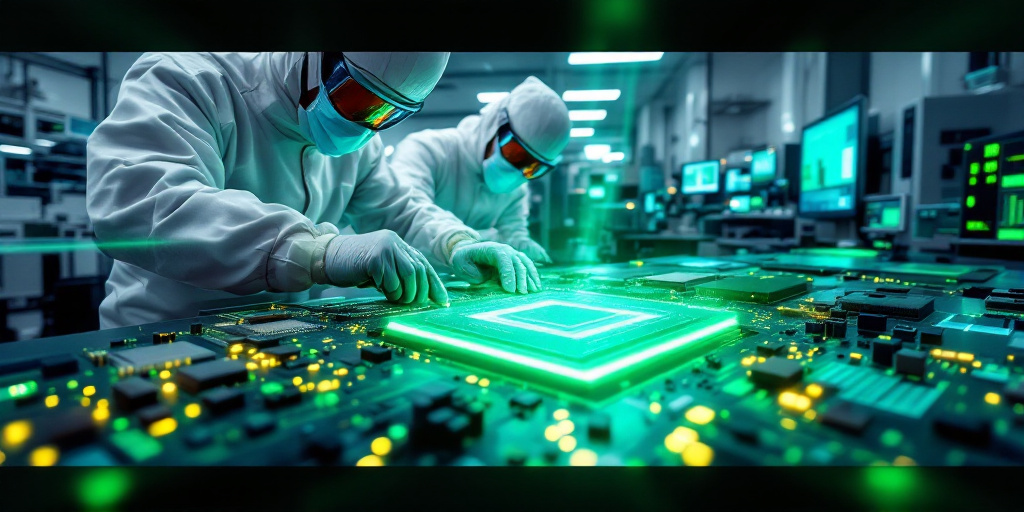Introduction
The semiconductor industry powers everything from our phones to our factories, but its rapid growth comes with an environmental cost. We’ll explore how new developments in sustainable materials, green manufacturing, and precision metrology are helping to reduce that footprint, turning semiconductors into a key part of a more sustainable future.
Green Materials Redefining Semiconductor Foundations
A major shift is happening in the materials used to build semiconductors. We’re moving away from traditional polymers and toward bio-based, recyclable thermosets. According to the Royal Society of Chemistry, these materials don’t just shrink the environmental footprint—they also improve energy efficiency. In practice, that means fabs can lower their energy use during production and cut down on chemical waste. Innovators are also swapping out high-impact substrates and photoresists for greener alternatives, which helps clean up the entire supply chain. I’ve noticed that companies are quick to adopt these changes, as they align with both internal and global sustainability goals. This focus on green chemistry and eco-friendly source materials is a clear signal that the industry is serious about lifecycle sustainability. For a deeper dive, the Royal Society of Chemistry has detailed findings here.
Eco-Friendly Processes and Circular Manufacturing
It’s not just about materials; the manufacturing processes themselves are getting a green overhaul. Fabs are adopting low-temperature deposition methods to build chip layers, which cuts energy consumption and improves efficiency by avoiding the intense heat of traditional techniques. This directly lowers electricity bills and operational costs. We’re also seeing smarter etching and cleaning processes that use less water and fewer harsh chemicals—a critical change as water becomes a more precious resource. As I’ve observed, even cleanroom automation is getting smarter, with systems that adjust in real time to minimize energy waste.
The idea of a circular economy is also taking hold. Instead of just disposing of materials, companies are finding ways to reuse wafers and recycle key resources. For instance, a fab might reclaim and purify solvents used in a cleaning step rather than sending them to waste treatment. By tracking the entire product lifecycle and streamlining logistics, fabs can set and meet ambitious net-zero targets. These practices aren’t just good for the planet; they’re becoming a key part of corporate responsibility and meeting consumer demand for greener tech.
Metrology and Reflectometry for Sustainability Control
Advanced metrology is crucial for making these green processes work. Techniques like reflectometry and other thin-film analysis tools provide the real-time process control needed to ensure sustainable production. Because these methods are non-destructive, they can monitor film thickness, uniformity, and material properties during manufacturing. This helps catch process drift early, cutting down on scrap wafers and costly rework.
For example, using WLRS technology (White-Light Reflectometry System) for optical measurement allows manufacturers to verify nanoscale layers with high precision. An in-line check might flag that a deposition layer is trending too thick, allowing an engineer to adjust the recipe before the problem affects yield. This level of control directly saves energy and materials on every run. Companies like Reflectonix are central to this effort, providing the quality control tools that make eco-efficient fabrication possible. It’s exciting to see how precision measurement is helping build a more sustainable digital world.
Conclusions
The path to sustainable semiconductor manufacturing combines better materials, greener processes, and smarter metrology. By adopting low-impact substrates, circular production models, and precision reflectometry, the industry is making real progress toward its sustainability goals. These technologies aren’t just theoretical; they are practical tools helping to build a cleaner, more efficient tech ecosystem. To see how our solutions fit into this picture, visit our product page or contact us to learn more.
Author: Lex S. I’m a senior semiconductor R&D specialist with 25+ years in analytical instrumentation, process development, and reverse engineering—working across SEM, FIB, AFM, EDX, reflectometry, and broad ion milling to uncover failure mechanisms and turn findings into better processes.

